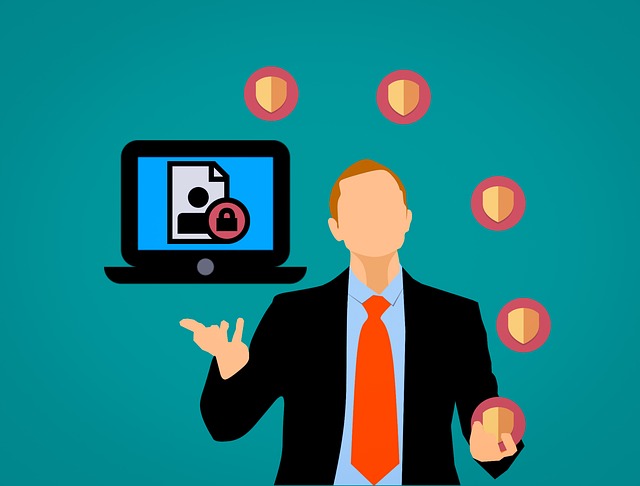Digital document verification in businesses with global coverage of clients and an immense network of AI models brings forth nothing but accuracy and speed.
The divergence from conventional methods of authenticating a client’s ID by corporate and the financial sector so far has made commendable improvements in the business cycle of organizations.
Successful enterprises in different industries recommend the service of identity document verification by global IDV providers.
It is evident that changing a firm’s infrastructure or operation models affects countless things, including customer reaction and experience; therefore, any modification needs to be thoroughly examined.
It needs to be understood by businesses that by implementing AI-driven authenticating systems, the number of financial crimes, information breaches, and regulatory non-compliance penalties by a huge difference, also on a reasonable price. The procedure of identity document verification is concise and close to perfection.
Table of Contents
How Does Digital Document Verification Work?
- A client for customer onboarding is required to submit a couple of images of ID records. The AI-based solution accepts multiple sorts of documents, including passports, CPR smart, employee letters, driving licenses, ID cards, and so on.
- For identity document verification, the customer also needs to transfer a recently taken selfie on the interface of the solution.
- Afterward, the digital system authenticates the client’s ID in no time by confirming the credentials presented by international non-public data banks and sanctions. OCR service converts the soft copies of documents into text for authentication.
- The facial recognition technology in document validation services confirms the customer by authenticating facial dynamics and comparing them with the face on the submitted proofs in identity document verification.
- The entire screening process takes seconds and displays the final conclusion with maximum authenticity.
READ ALSO: Document Collaboration Among Remote Teams: Tools And Strategies For Success
Standout Features of Document Verification Services Provider
AI-based systems in customer onboarding are recommended for numerous reasons that provide a headstart to every business owner in the race against fraudsters. There are a plethora of characteristics of the global solution.
To name a few:
NFC Authentication
Near Field Communication technology is the best of the lot. By the time NFC-enabled ID proofs were issued by the government, the identity document verification providers had seized the opportunity.
A business can swiftly validate clients despite an extensive setup of computers and smart technologies.
Due to this particular feature, a financial institute or a regular enterprise can confirm a client with a simple smartphone in no time.
Global Coverage
Identity document verification with information of international e-data storage units makes the customer onboarding seamless and error-free. A business can never guarantee its clients and their intentions. The display of money laundering status and other sanctions clears the doubt.
Based on identity document verification, a concerned business in the corporate or financial sector can use a risk-based approach and categorize its customers into low-risk, neutral, or high-risk sections.
Great Customer Experience
The accuracy rate and swiftness are some of the highlights of AI-based systems that lead to a better customer experience. A globally ranked solution for identity document verification can help business owners authenticate their customers at an ultrafast pace.
Quick conversion of prospects to the clients increases the revenue, and the AI models take care of false documents and imposters throughout. This is a unique selling point of identity document verification that benefits the client firm and its customers.
Deep Learning
The solution for identity document verification can easily spot false certificates and discard synthetic customers because of the immense network of thousands of AI models. How often is it said that a machine cannot shine in some aspects like a human expert?
Now, due to deep learning, automated solutions of identity document verification can be understood like humans as well, and therefore, the margin of inaccuracy gets even more reduced.
Now or Never
Financial violations are at their peak; in the most developed and progressing nations, the crime ratio is beyond limits. All of this supports the fact that identity document verification through AI-based systems is the present and the future.
Mainly due to the recent work-from-home situation, companies’ client onboarding and recruitment process has been completely digitized, giving the scammers more room for their game.
Identity document verification is highly optimizable for every single entity surviving in this pandemic. Banks, insurance companies, crypto exchanges, healthcare providers, ride-hailing platforms, gaming, and the list can continue forever. All of these are victims of ID frauds that lead to financial offences.
CHECK OUT: UpcomingSecurity
Building Trust: How Identity Verification Services Can Help (FAQs)
In today’s digital world, establishing trust is paramount for businesses and individuals. Identity verification services play a vital role in this process by ensuring you’re interacting with who they claim to be. Here are some FAQs to shed light on how these services can help build trust:
What is identity verification?
Identity verification involves confirming that a person is who they say they are and that their provided documentation (ID) is genuine and valid. This can be achieved through a variety of methods, including document checks, facial recognition, and verifying information against trusted databases.
Why is identity verification important?
Identity verification offers several benefits that contribute to building trust:
- Reduces Fraud: Verifying identities helps prevent fraudulent activities like fake accounts, money laundering, or identity theft.
- Enhances Security: By confirming identities, you can ensure that only authorized users access sensitive information or systems.
- Improved Compliance: Certain industries have regulations requiring identity verification for customer onboarding or transactions.
- Streamlines Processes: Automating identity verification can expedite customer onboarding and improve efficiency.
- Builds Trust: When users know identities are verified, it fosters trust and confidence in online interactions.
How can identity verification services help build trust?
Here’s how these services contribute to trust-building:
- For Businesses: Verifying customer identities demonstrates your commitment to security and protects against fraudulent activities, promoting trust with your customer base.
- For Individuals: Engaging with platforms that utilize identity verification shows you value your privacy and security, fostering trust in those online interactions.
What are some examples of when identity verification is used?
Identity verification is used in various scenarios, including:
- Opening a bank account online
- Applying for a credit card
- Accessing age-gated content
- Transferring large sums of money online
- Using cryptocurrency exchanges
- Renting an apartment online
What documents are typically required for identity verification?
The specific documents required can vary depending on the service or situation. However, common examples include:
- Government-issued photo ID (driver’s license, passport)
- Social Security number (in some regions)
- Utility bill or other proof of address
By understanding the importance of identity verification and how these services function, you can appreciate their role in building trust and security in the digital landscape.
Conclusion
The identity document verification solution is becoming an urgent need of business entities and the financial sector in this climate of consistently increasing ID frauds and financial violations.
Every business with a growing revenue margin is a target of scammers. Identity document verification merely takes a few seconds but provides ultimate protection to businesses.
INTERESTING POSTS
- Controlling Data Breach And The Use Of DRM For Document Security
- Hackers Target WhatsApp with Verification Scam
- Merging And Combining: How To Merge PDF Files Into A Single Document
- Superior Security Enhancement With Biometric Fingerprint Scanner
- 5 Certified Benefits of Identity Theft Protection
- Integrating Security Awareness Training Into Employee Onboarding
- Just How Critical Is Customer Onboarding?
- Cybersecurity Tips For Gambling
About the Author:
Chandra Palan is an Indian-born content writer, currently based in Australia with her husband and two kids. She is a passionate writer and has been writing for the past decade, covering topics ranging from technology, cybersecurity, data privacy and more. She currently works as a content writer for SecureBlitz.com, covering the latest cyber threats and trends. With her in-depth knowledge of the industry, she strives to deliver accurate and helpful advice to her readers.








